ffw
Delete filter
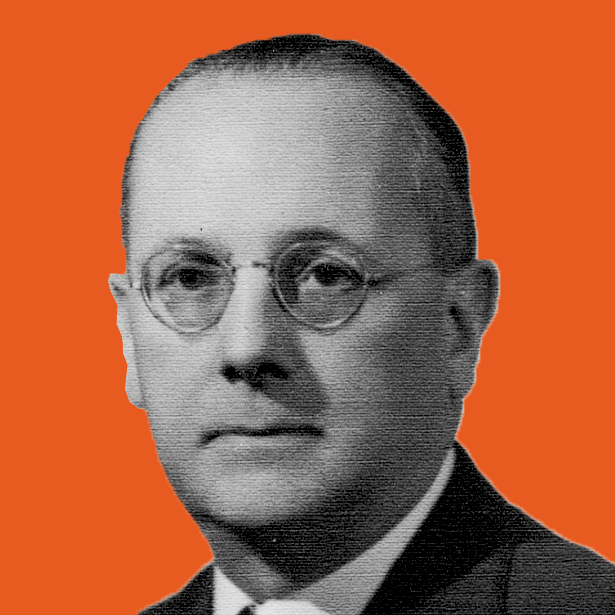
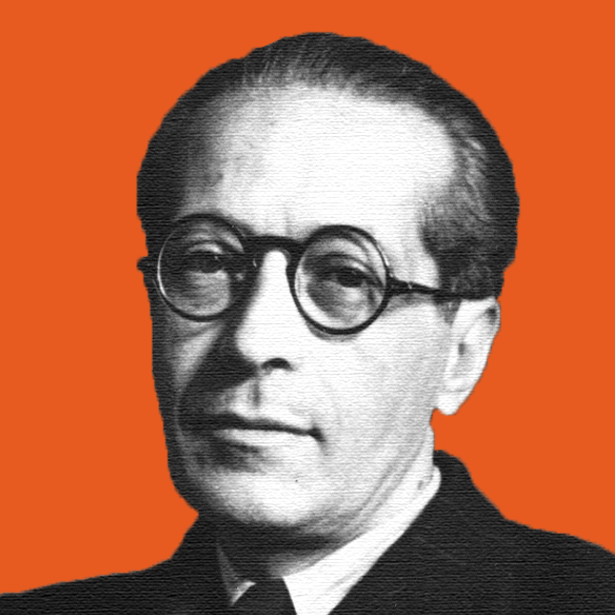
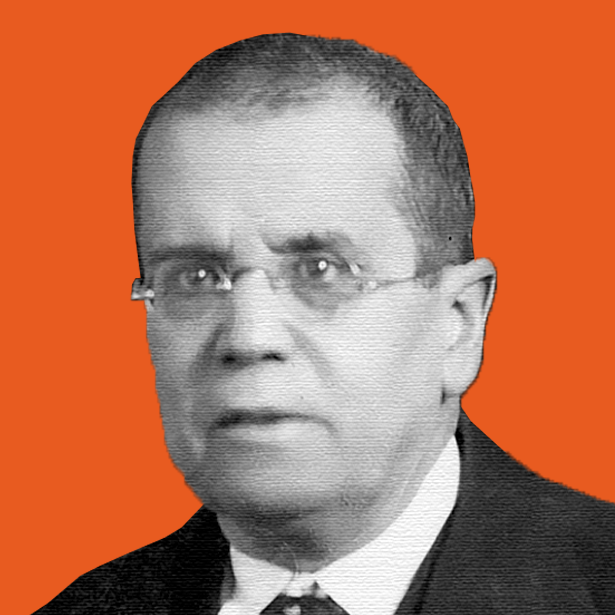
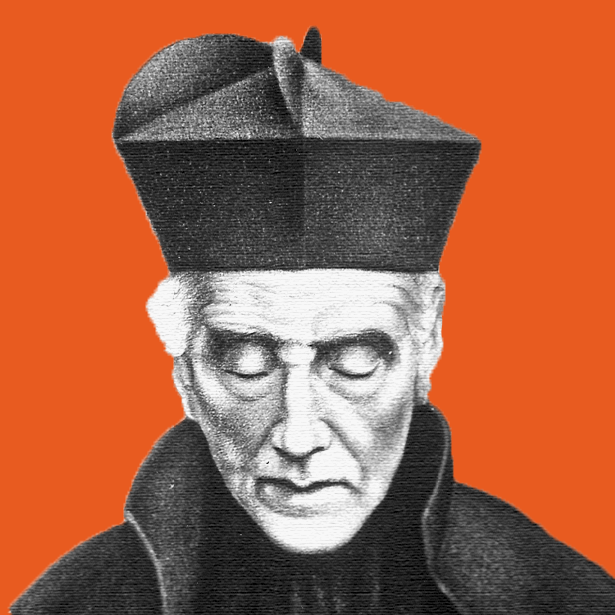
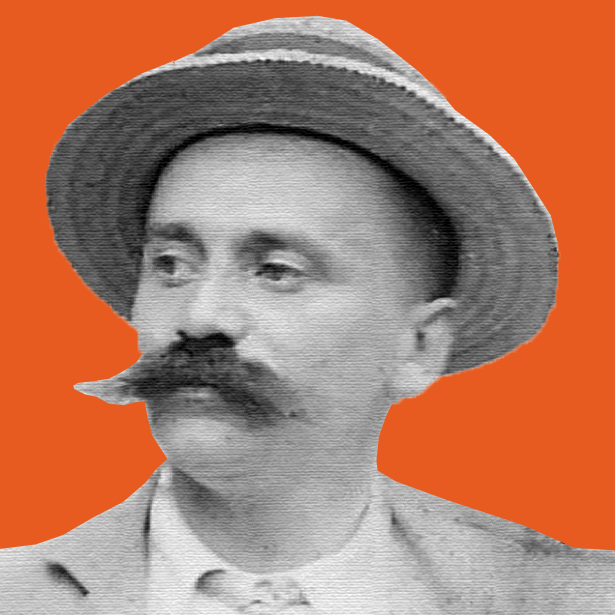
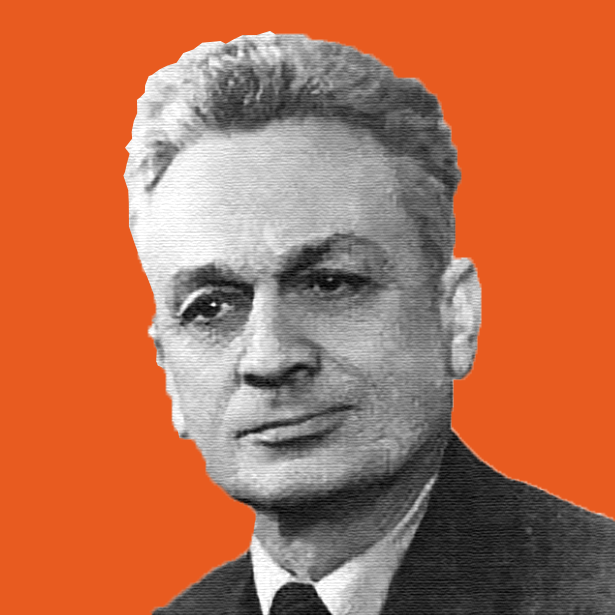
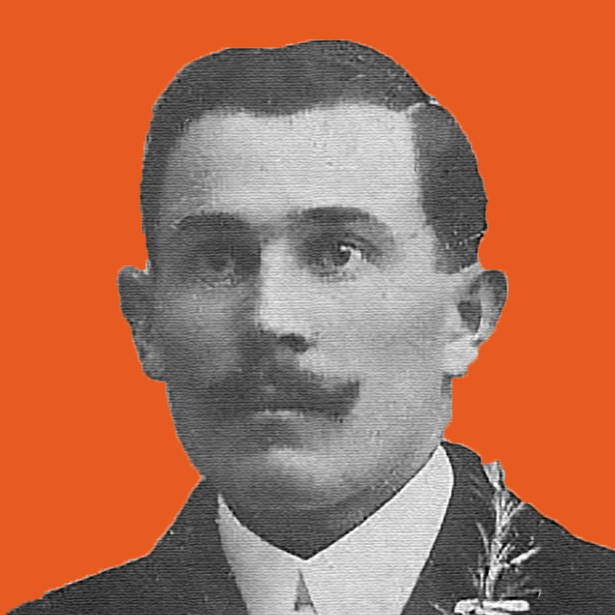

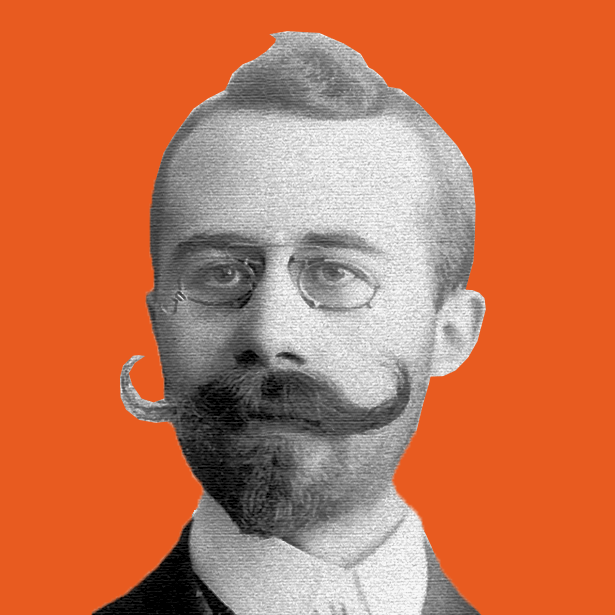
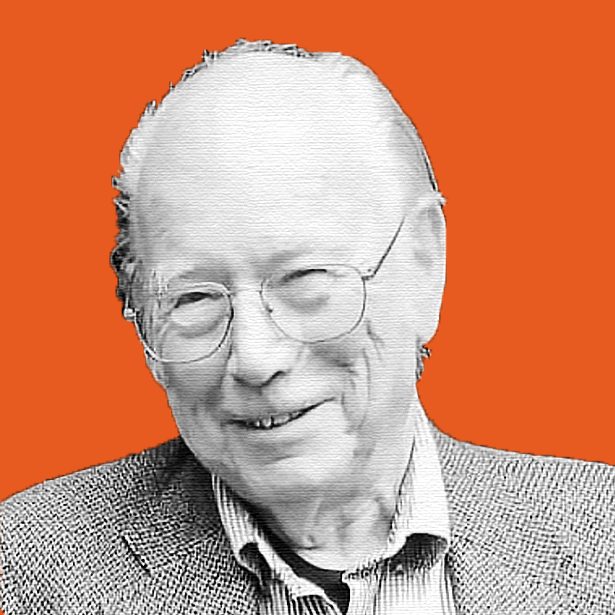
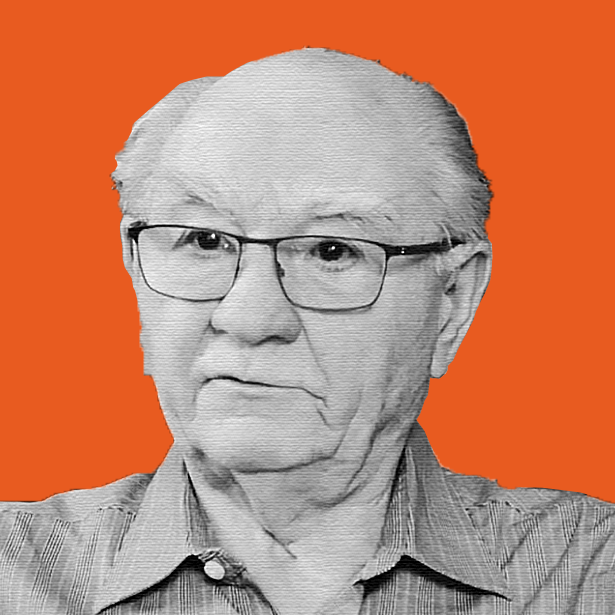
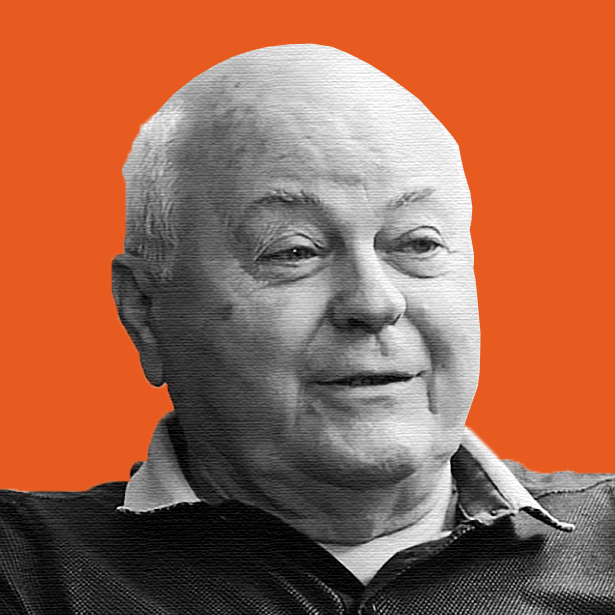
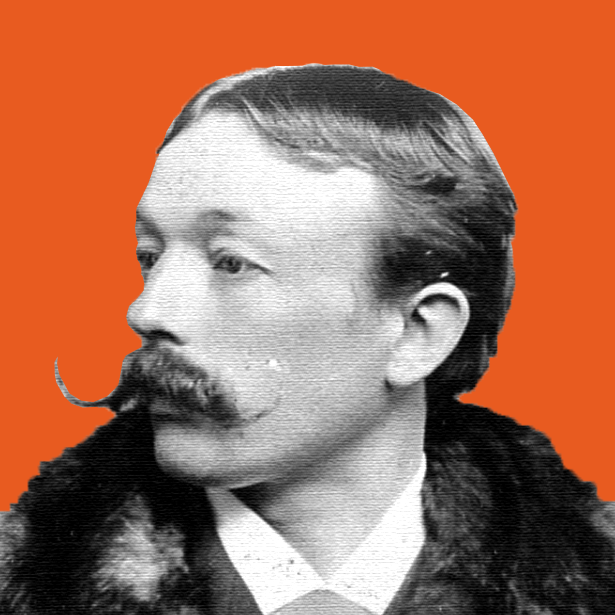
xxx


























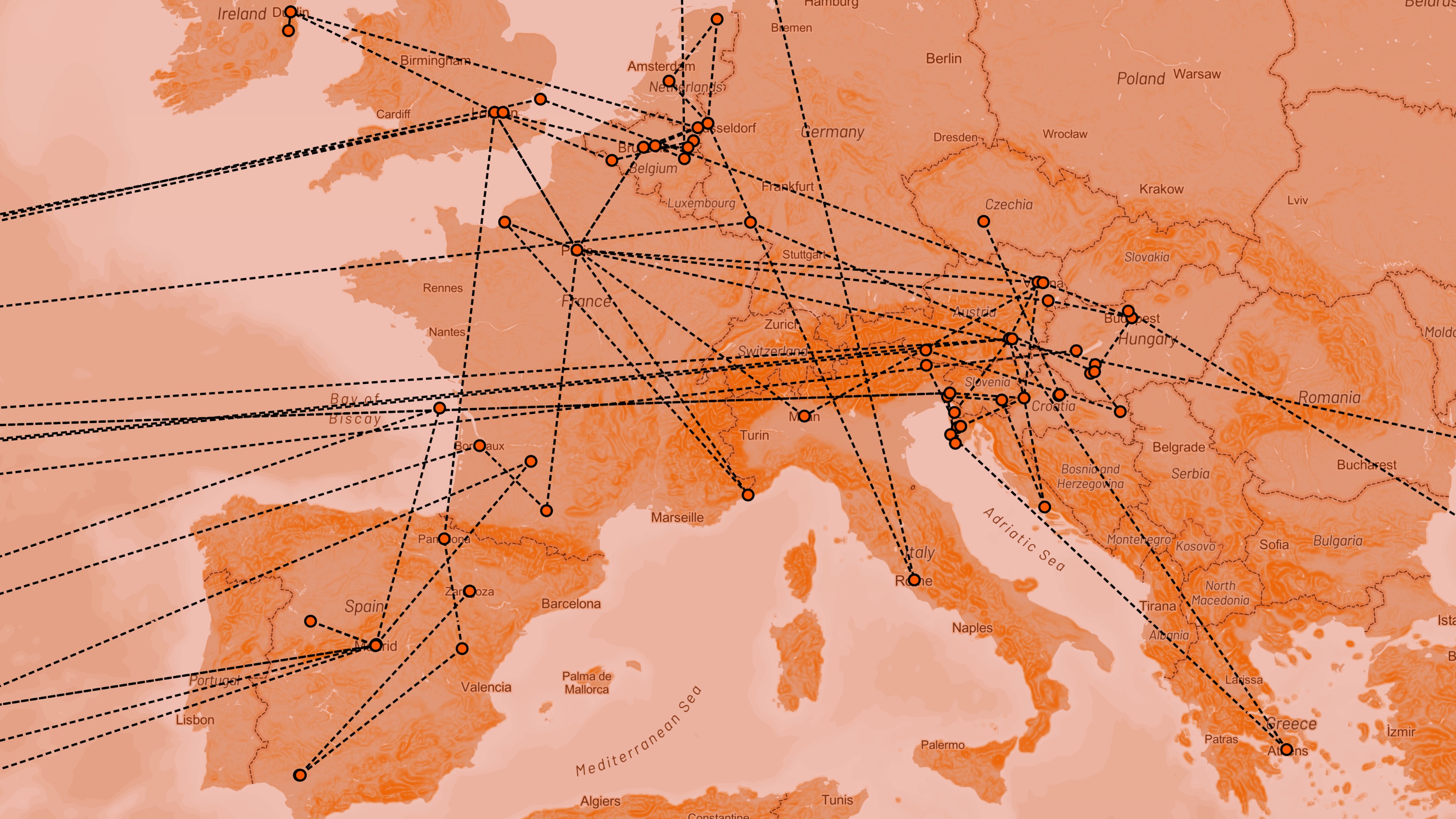
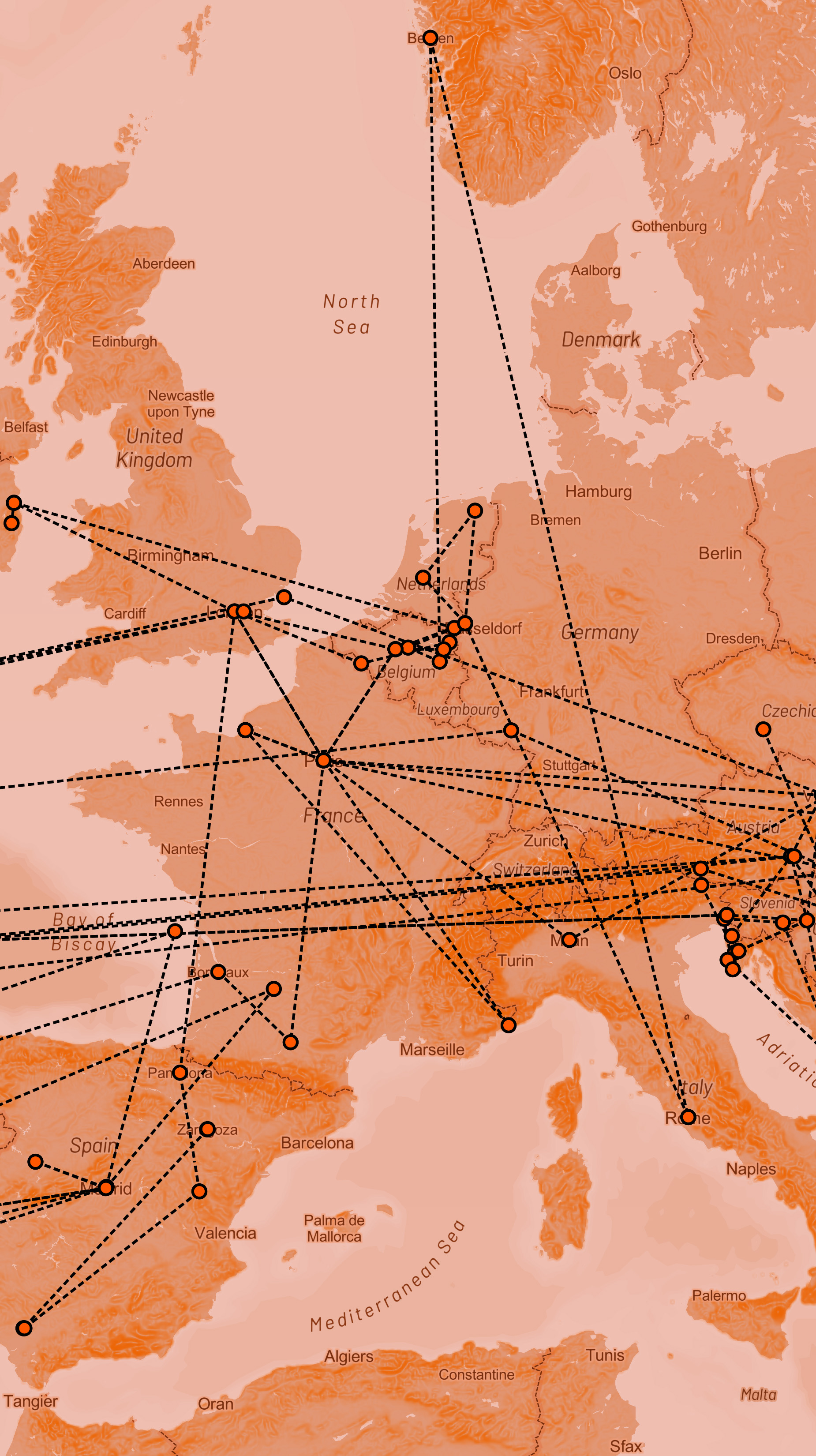
Click on a line or select an event from the filter to see the description of the migration event. Drag the map around to see more.
José Giral was born in Santiago de Cuba, son of a Spanish Military man and a natives of Santiago de Cuba.
Click on the image for more information!
He studied Chemistry and Pharmacy at university and, in 1905, obtained the chair of Inorganic Chemistry at the University of Salamanca. In 1920 he moved to Madrid to take up the chair of Biological Chemistry at the Central University.
His Republican and Masonic militancy led him to prison for the first time in 1917, due to his activity in favor of the general strike. He would return to prison on three other occasions for his support of Republican ideas.
Giral, who became a close friend of Manuel Azaña, was part of the creation of the Acción Republicana party. After the proclamation of the Second Republic on 14 April 1931, José Giral held the posts of State Counsellor and Rector of the University of Madrid. He was Minister of the Navy in all the governments presided over by Azaña.
On the morning of 19 July 1936, one day after the coup d'état of July 1936 that started Spanish Civil War, Giral was appointed President of the Council of Ministers. One of the first measures Giral took was to authorise the delivery of weapons to the people, which enabled the rebellion to be crushed in many places. On 3 September 1936, Giral submitted his resignation to Azaña.
The formation of the new government did not mean his departure from it, as he continued to sit on the Council of Ministers as a minister without portfolio. He was present at the last meeting of the Republican Cortes, held at Figueras Castle on 1 February 1939.
On 5 February 1939, Giral crossed the French border with Azaña and Martínez Barrio. He boarded the Flandre in Budeaux bound for Mexico with his entire family in April 1939.
On 2 June 1939, accepting an invitation from the Mexican government, he arrived with his family in Veracruz.
In Mexico, he immediately resumed his scientific and teaching career, although he did not abandon politics. From 1940, he was a member of El Colegio de México, an institution he resigned from in August 1945 due to his appointment as head of the Spanish Republican government.
Giral’s influence in the chemistry field was notorious. He was an honoured academic from his arrival in Mexico until his death. He finished his scientific and teaching career in the Faculty of Chemistry at the National Autonomous University of Mexico.
In August 1945, after the death of Azaña and the resignation of Diego Martínez Barrio as President of the Republic in exile, he asked Giral to form a new government. The exiled Parliament met on 17 August 1945 in the Sala de Cabildos in the Zócalo in Mexico City.
At the beginning of 1947, due to socialist pressure, Giral's government resigned, and he returned to his teaching and scientific occupations.
José Giral was warmly welcomed to Mexico, both by the Spanish exiles and by the Mexicans themselves.
He spent the rest of his life in Mexico, where he lived with his family, who also developed their careers in different fields there with great success.
José Giral died on 23 December 1962 in Mexico City. His remains were buried in the Spanish Pantheon in Mexico City. Acción Republicana Democrática Española held a posthumous tribute to José Giral at the Spanish Ateneo in Mexico.
In March 2008, the children of Francisco Giral, his first-born son, and the Ministry of Culture signed a gratuitous bailment contract to deposit the documents in the National Historical Archive in Madrid. The archive arrived in Madrid in May 2009.
José Giral Barnés, grandson of José Giral Pereira, was interviewed about his grandfather and his own migratory experience, in July 2023 at the National Historical Archive in Madrid.
Interview with Don José Giral Barnés, grandson of our protagonist.
Allow zooming in the map with the button in the top left corner. Click on the circles to see a document corresponding to an event in José Giral Pereira's life.
Constancio de Bernaldo Quirós y Pérez was a Spanish writer, sociologist, jurist, Professor of Criminal Law and Criminology and one of the key figures of Regenerationism.
He was born in Madrid in 1873
He graduated in Cardenal Cisneros secondary school in 1887, at 14 years old and studied Law at the Central University of Madrid in 1887-1893
He became one of the most prominent Spanish sociologist and jurist, professor of Criminal Law and Criminology. During this period (1898 - 1933) he published numerous articles and essays such as:
He was an outstanding mountaineer and pioneer of mountaineering in Spain. In 1913 he was one of the founders of the Peñalara Mountaineering Club, of which he was president until 1916. He wrote, among other works on this subject: Peñalara. Notas de camino por la Sierra de Guadarrama (1905), Guía alpina de Guadarrama (1915), La Pedriza del Real del Manzanares (1921) and Sierra Nevada (1923).
For his outstanding work in this field, he was elected honorary member of the Spanish Alpine Club.
In 1929 he was appointed Deputy Director of Agrarian Corporations and then, with the proclamation of the Second Republic in Spain, he moved to the General Subdirectorate of Agrarian Policy of the Ministry of Health and Social Welfare, in the period 1931-1936, when he became the main editor of the profuse "Agricultural and Labour Legislation of that time.
He also taught at the Social School of the Ministry of Labour and Social Security and was a Professor of criminology at the Institute of Criminal Studies.
Before the end of the Spanish Civil War, in February 1939, he entered France and was interned in an asylum led by nuns in the town of Fumel, Department of Lot-et-Garonne, together with his wife, two daughters (Maria and Julia) and two grandchildren (Luis and Carmen), remaining there until August 1939. His economic and living situation was dramatic and he sent a request for asylum to the Mexican embassy in France.
With the help of the SERE (Spanish Refugee Evacuation Service), Bernaldo de Quirós and his family set off on the last voyage of the steamer Lasalle, which was sunk by German submarines during its return voyage to Europe, from Bordeaux, arriving in the Dominican Republic (Puerot Plata) on 23 February 1940.
He arrived in the Dominican Republic as an anonymous asylum seeker. On his arrival, he was lodged with his family at the "Trujillo" Agricultural Farm in San Francisco de Macoris. Later, they were transferred by the influential people of the town, along with other refugee families, to the upper floors of the Governor's Office in San Francisco. There they remained for several months, living on the help they received from the Spanish Republican Migration Service (SERE) and the gifts of many people from different social strata in San Francisco de Macoris.
C. Bernaldo de Quirós became a Professor at the University of Santo Domingo shortly after arriving in the Dominican Republic (1941).
Due to his disagreement with the Dictator Trujillo regime, then prevailing in the Dominican Republic, on 27 July 1947 he moved with his wife to Mexico City, where his son, Constancio Bernaldo de Quirós y Villlanueva lived, and where he worked as a Professor of Criminology and Penitentiary Law at the National Autonomous University of Mexico. His knowledge of policing led him to the Mexico's Federal District Attorney's Office, where he directed the Staff Training School.
From his arrival in America until his death, he never stopped working for a single day in teaching, in sometimes very difficult health conditions. He was Professor of Criminology and Comparative Criminal Law at the University of Santo Domingo, Professor of Criminal Law in Havana and, finally, Professor of Criminology and Penitentiary Law at the UNAM (National Autonomous University of Mexico). He gave countless lectures in cities and towns in the Dominican Republic, Cuba and Mexico. He contributed to various journals published in different countries of the continent; he advised on several criminal codification projects and was the author of the legislation governing criminal law in the Republic of Honduras. Some of his works are official texts in various Latin American universities.
Constancio de Bernaldo Quirós y Pérez died in Mexico in 1959.
Interview with Dr. Roberto Cassá Bernaldo de Quirós, grandson of our protagonist.
Allow zooming in the map with the button in the top left corner. Click on the circles to see a document corresponding to an event in Constancio Bernaldo de Quirós's life.
Joannes Andreas Houben was born in Munstergeleen, a village near Sittard, the Netherlands, on December 11, 1821, son of Pieter Joseph Andries Houben, a miller, and Anna Elisabeth Luyten. His birth was recorded the day after in the records of the municipality of Geleen, a neighbouring village, and not Munstergeleen: to get to the town hall of Munstergeleen, his father would have had to cross a river - the town hall of Geleen was easier to reach.
Click on the image for more information!
Joannes Andreas Houben was baptised on the day he was born in the church of Munstergeleen. His faith would form a big part of his later life.
On 5 November 1845, Joannes Andreas Houben went to the Passionist convent in Ere to become a priest. He became a priest on 21 December 1850. Becoming a priest meant to leave his previous ‘life’ behind; his new life was with the church now and his name, Joannes Andreas Houben, changed to Carolus a Santo Andreas and he became known as Father Charles (Pater Karel).
After he became a priest with the Passionists in Ere, Belgium, he went to England to help Irish refugees from the famine.
After he left London, he moved to Dublin, Ireland, where he helped raise funds to build the monastery of Mount Argus.
In Ireland, he became widely known and was a popular priest - though he was not a very good preacher. He was famous for his ‘healing hands’, and people came from far to receive his blessing. He also travelled through Ireland to bless people, such as the medieval village of Glendalough where a big crowd gathered to be blessed by him.
He passed away in Mount Argus on January 5, 1893 and was buried there, never having returned to the Netherlands.
In 1988, Father Charles was beatified, and in 2007 he was declared as holy. His remains, once buried in Mount Argus, now became relics, some of which came back home to Munstergeleen, where the house of his birth is now a pilgrimage site.
The legacy of Father Charles lives on. To reach England, he made his first journey by train, which in 1852 was still quite new and impressive to do. In 2007, there was a train in our region, picturing him.
Allow zooming in the map with the button in the top left corner. Click on the circles to see a document corresponding to an event in Joannes Andreas Houben's life.
The Depieras, it seems, moved to Tinjan from the Italian region of Carnia (the parish of Calgaretto, the municipality of Comeglians) as early as the 17th century. The family enjoyed the status of nobility, which had been awarded to them for their various services by Frederick III, Holy Roman Emperor, in 1482. The members of this Italian family were craftsmen, more precisely – highly skilled tailors, which allowed them to easily adapt to new surroundings. As a result of their diligence and craftsmanship, the Depiera family lived a life of prosperity, preserving the language and customs of their native region of Carnia.As for their life before they had migrated from Carnia, the records are scarce.
The Depieras, weavers at the time, migrated to Tinjan in 1670. Giacomo and Candida are the first ancestors of this branch of the family whose names were recorded, even though no record exists of their birth or death. The history of the family line in Tinjan begins with the wedding of Sebastijan Depiera and Clementine Casamara in 1670.
The Depiera family counts numerous distinguished and successful members, and we shall use this opportunity to present the most prominent of them all – Vittorio Depiera. Vittorio was born on April 15, 1871, as the fifth child to the Depiera family.
After finishing primary school in Tinjan, Vittorio Depiera continued his education in secondary school in Koper.
Vittorio continued his education at the University of Graz, where he studied law as of 1888. He graduated in 1893.
After the graduation Vittorio Depiera traveled the region. His travels were as much of an opportunity for him to learn about history, culture and society, as they were a favorite pastime of his and a source of fun. On his travels he developed a second hobby – amateur photography. Most of his travels occurred between 1893 and 1899. His photography collection confirms that he visited Athens in 1896.
Vittorio Depiera married Ana Bartoli in 1899. They lived in Rovinj and had two children. It is in Rovinj that Vittorio continued his successful career as a lawyer by founding the Bartoli-Depiera law firm.
Allow zooming in the map with the button in the top left corner. Click on the circles to see a document corresponding to an event in Vittorio Depiera's life.
Stojan Brajša was born in Pazin on January 24, 1888.
Stojan Brajša finished secondary education in Pazin in 1907.
In 1908, Stojan helped found the Croatian Catholic Academic Society “Juraj Dobrila” in Pazin.
Stojan Brajša studied law in Zagreb, Vienna and Graz, and received his doctorate in 1912 in Zagreb (Croatia) and Padua (Italy).
From 1914 to 1917, he worked as a court trainee in Pazin.
From 1917 to 1920 he worked as a trainee lawyer in Pula.
In 1920, he moved to Gorica. He worked as a trainee for dr. Karlo Podgornik for three years, and then, from 1923 to 1931, as a lawyer.
Receiving threats from the Italian fascists, Stojan was forced to go to Slovenia. He first spent three months in Novo Mesto (1931). In Novo mesto he worked as a lawyer.
After a short immigration to Novo Mesto, Stojan Brajša fled to Split where he spent 10 years as a lawyer (1931-1941).
In 1941 Stojan Brajša fled to Zagreb via Bosnia (running from the Italians) and stayed there until the end of World War II. In Zagreb he worked as a judge (1941-1945). Also, that period he was writing for the Monthly of the Law Society in Zagreb and for the Gore srca magazine, edited by Božo Milanović. He wrote and published legal debates, texts on philosophy, pedagogy, psychology and musicology, legal and philosophical textbooks, books in co-authorship and those that he was the sole author of. Moreover, he worked as a translator and a teacher.
In July 1945, Stojan Brajša returned to Gorica, Italy, where he remained until his death in 1989. After World War II, he taught Latin, Greek, English, Slovenian, geography and history at the Slovenian secondary school in Gorica. He then worked at Slovenian Radio in Trieste and later at the Legal Department of the Allied Administration as a lawyer and translator.
In 1956/57, he lived in Toronto, Canada, for nine months.
In 1984, Stojan drew up his will, according to which he would leave his library to the Seminary of Pazin, and in return he asked that they pray for his soul.
Stojan Brajša died in 1989.
Allow zooming in the map with the button in the top left corner. Click on the circles to see a document corresponding to an event in Stojan Brajša's life.
Dočkal family moves from Czechia to nowadays Croatia in 1885.
Alois Dočkal was the youngest son of the Franjo and Franciska Dočkal, née Pospišil. Alois was born in Ivanovčani in 1888.The Dočkal family moved from the region of Moravska (the town of Brodek u Přerova) to the area of Ivanovčani near Bjelovar with their four children around 1884. Back then, Bjelovar was a military town, so the Austro-Hungarian authorities encouraged farmers to migrate to Ivanovčani and produce food for the army and the citizens of Bjelovar.
The Dočkal family was given 29 acres of land by the authorities. The Dočkals were a wealthy family, as is manifest from the fact that they had arrived with four pairs of horses and with agricultural machinery, among which was the first threshing machine in Bjelovar. Before World War II had begun, Franjo Dočkal joined the Czech society “Češka obec Bjelovar”.
In 1912 Alois married Marija Čech (1892-1972), a woman from Plavnice near Bjelovar, with whom he had four children.
The Dočkal family sought to preserve Czech as their mother tongue. Hence, all four children, Stjepan (1913-?), Vjekoslav (1915-1991), Emilija (1916-1991) and Vladimir (1918-1980) attended the Czechoslovak Masarykova School in Bjelovar starting from 1925.
Alois's uncle was Kamilo Dočkal, Catholic priest, historian and founder of the Diocesan Museum in Zagreb.
Alois's daughter, Emilija Dočkal with a group of friends in 1941
In Socialist Yugoslavia, Alois declared himself as Croatian. He and his son Vjekoslav worked as farmers and cultivated 12 acres of land, but opposed joining an agricultural cooperative. In 1949, Alois was arrested for burning the barn of the president of the cooperative. He was sentenced to death by firing squad, permanently stripped of any civil and political rights, and had all his property confiscated. Vjekoslav was charged with undermining socialist development in the countryside together with his father. He was sentenced to forced labor, lost voting rights for a period of two years, and had all his property confiscated. The fact that Alois’s uncle Kamilo Dočkal was a high-ranking priest of the Zagreb archdiocese contributed to such severe charges and punishments.
The Czechoslovak School Masarykova Bjelovar was founded by the Czech society “Češka obec Bjelovar”.The school was accredited by the Ministry of Education in Belgrade on July 15, 1925 (becoming law under decree number 39502). Classes began on September 1, 1925, and the new school building was officially opened soon after on November 15. It was a private accredited school and was named the Czechoslovak School Masarykova Bjelovar (Československá škola Masarykova Bjelovar).
The school was attended by children from the town of Bjelovar and its residential areas: Brezovac, Gudovac, Ivanovčani, Hrgovljani, Korenovo, Križevačka cesta, Nove Plavnice, Male Sredice, Velike Sredice, Markovac (Trojstveni), Mlinovac, Novoseljani, Prokljuvani and Ždralovi. Several students were from the nearby villages of Obrovnica, Predavac, Rovišće and Severin, and a single student from the village of Sv. Ivan Žabno. The school was attended by 757 students (boys and girls) in total.
The classes were held in Czech by teachers mostly coming from Czechoslovakia, and they were organized according to the Czechoslovak curriculum. There were also classes taught in Croatian, such as the Croato-Serbian language and Yugoslav history and geography classes, held by part-time teachers.
The Czechoslovak School Masarykova Bjelovar was closed in June 1941, at the end of school year 1940-1941, by the Ministry of Religion and Education, the Department of Public Schools of the Independent State of Croatia. The Ministry abolished all private Czech elementary schools and kindergartens, as well as Czech departments in Croatian public schools on June 3, 1941. The school building, which also served as the headquarters of “Češka obec Bjelovar”, was destroyed in the bombing of Bjelovar in 1944. The Czech society “Češka obec Bjelovar” continued to operate after World War II, but the Czechoslovak School Masarykova Bjelovar was never reopened.
Allow zooming in the map with the button in the top left corner. Click on the circles to see a document corresponding to an event in Alois Dočkal's life.
Theodor Uhlir was born in Dražice (a village in Tabor District, in what is today the Czech Republic)
The Uhliř family (brothers Teodor, Franjo and Rudolf) migrated from Dražice to Ivanovčani at the end of the 19th century.
In 1896, Theodor Uhlir married Terezija Šebela (1876–1963), an immigrant from Rača (a borough of Bratislava), which was part of the Kingdom of Hungary in the dual monarchy.
Stjepan and Marija, were born in Ivanovčani. Their father, the head of the family, insisted that the children speak Croatian, because when they spoke Czech, the neighbors could not understand them and thus thought the family was gossiping about them. His wife Terezija, however, never quite acquired Croatian, which is why her grandchildren also partially learned Czech. Terezija would speak Czech with her daughter-in-law, Emilija Dočkal, who had attended a Czech school. Terezija was, in a way, the guardian of the Czech language and customs in the Uhliř family, especially traditional dishes such as sweet yeast buns, dumplings and potato soup (buchtičky, knedlíky, bramborová polévka).
Teodor and Terezija’s son Stjepan Uhlir (1899-1974) received education at the Gymnasium in Bjelovar. When he came of age in 1917, he entered active military service. Emilija Dočkal and Stjepan Uhliř got married in 1934 and had two sons: Andrija (1936-1999) and Miroslav (1952). Although the family worked in agriculture, both sons became skilled auto mechanics; Andrija was taught by Knytl, a well-known auto mechanic from Bjelovar. Stjepan, despite reading books in Czech and listening to the radio (which was a rarity at the time) to keep track of political events, did not wish to stand out. This is why his family never joined the local Czech society “Česka obec Bjelovar”.
Uhlir family continued the agricultural traditions.
Allow zooming in the map with the button in the top left corner. Click on the circles to see a document corresponding to an event in Theodor Uhliř's life.
Felix Jean Joseph Hubert Rutten, son of Martin Emmanuel Rutten, a tanner, and his wife Theresia Maria Hubertina Imkamp, was born on 13 July 1882.
Felix Rutten grew up in a house on the market square of Sittard. The house still exists, but has been changed beyond recognition. What is recognizable, is the memorial stone next to the door, indicating that this is where Felix Rutten was born and grew up.
In 1903, Felix Rutten went to Leuven to study Germanistics.
In 1906, Felix Rutten went to Liège to continue studying.
In 1910, Felix Rutten became a travel journalist, and his first destination was Norway.
After his various travels through Europe, he came back to the Netherlands and went later back to Rome. In 1939, he settled permanently in Rome.
For being an outstanding ambassador for Rome, Felix Rutten received an award in 1957.
Chris Rutten visits Felix in Rome.
Felix Rutten is honoured in his hometown of Sittard, but he himself was absent and addressed those present with an audio recording.
Felix Rutten died on December 22, 1971 and is buried at Campo Verano in Rome. A few days earlier, on December 13, journalist Sjef Vink took the last photo of Felix. His last wish to be buried in Geulle (NL) was not possible, though the municipality did try to get him reburied in Geulle.
Felix Rutten's legacy is enormous. Numerous books and articles are written about him. He was important for Rome and Sittard. On June 11, 1994, a statue, made in 1957, was placed in the 'Felix Ruttenlaan', a street which is named after him.
Allow zooming in the map with the button in the top left corner. Click on the circles to see a document corresponding to an event in Felix Rutten's life.
András Sándor was born in Buda in 1934 and graduated from the II. Rákóczi Ferenc High School in 1952. He obtained his degree in Hungarian literature from the University of Szeged in June 1956. After completing his degree, he sought and received exemption from the mandatory teaching practice, as he aimed to make a living through writing and journalism. It was during these pursuits that he witnessed the revolution unfold in Budapest. On October 23rd, he was at the Parliament, and later, at the Writers' Association, he assisted in various capacities, including contributing to the editing of the University Youth magazine. After November 4th, he and György Gömöri took the final issue to the printing press.
On November 17, 1956, he went to Vienna with a four-member delegation from the University Revolutionary Student Committee on a two-week mission. The committee's task was to organize an international student conference to condemn the Soviet attack and invasion on November 4. They were unsuccessful in Vienna because the Viennese had declared themselves neutral. They heard that the Oxford students were very enthusiastic and would surely help them, so together with György Gömöri, another member of the delegation, they went to London (Lancaster Gate Hotel 29 November 1956) and then to Oxford three days later (Oxford, University 1 December 1956).
In Oxford, they received money from the students, so to carry out their task, they traveled on with Gömöri to Leiden (COSEC Commissie voor Internationale Studenten van Leiden), the Netherlands, in mid-December 1956. After returning to England, they learned that the committee members had been arrested in Budapest, so they decided not to return.
On the flight from Vienna to London, they met Max Hayward, a professor from Oxford, who later advised and encouraged him to write his dissertation in German at Oxford. In his autobiographical entry, he writes about this period: "He arrived in Oxford via London, where they were warmly welcomed by enthusiastic 'old refugees.' In addition to the Hungarian section of the BBC, there was the London office of Radio Free Europe; Cs. Szabó László worked at the former, his wife Bözsi at the latter, along with Szabó Zoltán, the wonderful secretary-generalist Gruber Márta, and of course others, such as Révai András, co-owner of the Pallas Gallery art book publisher and particularly a close friend of the Szabós. Many newly arrived refugees, both old and young, also ended up there, including the Hungarian Writers' Association Abroad, the Literary Gazette, Faludy, Ignotus, Szász Béla, Cs. Szabó András, Sárközi Mátyás, the two 'hosts,' ('Lóránt host' Czigány and 'István host' Siklós), who, together with Czigány Magda and the advice of the two Szabós, Zoltán and 'Csé,' founded the Szepsi Csombor Circle, also as a publisher.
London remained the primary center for AS, as many knew him: ASAK, throughout his life […]" He wrote his emblematic poem titled 'Az ASAK beadványa az ENSZ-hez' (Former application of the S.A.A.R. (Sándor András Autonomous Republic) to the U.N. 1958) in this period, in which he emphasizes the individual's autonomy, independence, and position above power interests. The emblematic poem captures the general mood of post-'56 emigrant existence.
András Sándor completed his dissertation in 1961. Due to family reasons (his mother and brother were already in New York by then), he wanted to move to the United States. With a recommendation from his Oxford professor, he was accepted to Princeton University, to the German department, with a scholarship for a year. He felt very comfortable in Princeton, where he received a $6,000 scholarship, more money than he had ever had. He also taught German literature there.
During his time at Princeton, he had significant encounters, notably forming a friendship with Richard Rorty, a prominent American philosopher renowned for his contributions to pragmatism and philosophy of language. Rorty, along with his wife Amélie Rorty, who was the granddaughter of the London-based publisher and writer Isaac Deutscher, became close acquaintances. Rorty taught at Princeton University from 1961 to 1982, playing a pivotal role in the Department of Philosophy. Princeton served as the epicenter of English-style linguistic philosophy in America, with Rorty's presence adding to its intellectual vibrancy. He didn't want to stay in America, so after a year, he returned to Europe, by cargo ship. The journey lasted a whole week under a blue sky and beautiful sunshine.
He returned to London, where he commenced work as an unskilled labourer in a factory, night shift, in the textile industry. Just as he returned, the Oxford professor was there to offer him to publish his dissertation in the Anglica Germanica series, in book form. He replied affirmatively but expressed a desire to add a supplement. Consequently, every night, from 10 p.m. to 6 a.m., he worked in the factory. After work, he wrote about Heine. This became the last chapter of his book titled "The Exile of Gods". This lasted until January when night shifts ceased.
Shortly after, at the end of January, he was hit by a car and spent six weeks in a hospital with multiple fractures. This was significant because during his stay, he decided on his career path to be a temporary tutor. The Oxford professor suggested he go to America then, as there were few teaching positions available in England, especially in German departments. Thus, he found himself returning to America for an extended period. In spring 1963, he worked at the Hungarian department of the BBC. Then, in the fall, he received a DAAD scholarship to study philosophy at the University of Munich for an academic year. Consequently, at the end of the academic year, he moved from London to California via Munich.
He decided to pursue his doctorate in Los Angeles. He applied to several universities and eventually ended up at the University of Southern California (USC). At USC, he worked as a teaching assistant, teaching language courses while taking seminars to fulfill his doctoral requirements. His annual salary was low, so he also worked twenty hours a week at the library. During his time at USC, he integrated into the local German community, attended a German theater, and connected with notable individuals. Many Germans lived in that area. It was there that he met his department head, Von Hofe, through Feuchtwanger's widow in her flower garden. Feuchtwanger was one of the most popular German writers of the 20th century.
In the academic year 1964/65, he spent a year as a visiting lecturer in Montreal at Concordia University, in the department of László Kemenes Géfin (1937–), where he taught philosophy of modernism. Later, in 1981, with László Kemenes Géfin, József Bakucz, and György Vitéz launched the journal "Arkánum" in Washington, D.C., United States. The journal is part of the "émigré" Hungarian literature that fled Soviet occupation. Over 15 years, twelve issues of the journal were published until 1997.
He had a friend, Ninon Neményi, whom he knew from Pest, where they met at the Student Committee. After the revolution, she ended up in Cambridge, where she completed her doctorate and married an English atomic physicist. Through him, she got to Berkeley, where she taught Hungarian. She called him in early 1965, saying that she and her husband were moving back to England, and asked if he would like to go there to teach Hungarian in her place. He said that he would be writing his dissertation, but she encouraged him, saying that he could manage to do it alongside teaching. That's how he ended up at the Slavic Department in Berkeley, as Hungarian was taught under the Slavic department there. Incidentally, Czeslaw Miłosz, the later Nobel Prize-winning Polish poet, was also at that department, and he became very good friends with him, as well as with Zdisław Najder, whom he already knew from Oxford, and his family. He taught at Berkeley for four years. In 1967, he settled down, and in the same year, he completed his doctorate.
He thought that if he didn't return to teaching German, he would fall out of the academic field. His Heinrich Heine book was published in early 1968, with an imprint from 1967. He thought he could still position himself as a Germanist. He pondered where to go, which subject to pursue. He initially applied for a position the University of Kansas. After securing his plane ticket, he and his wife discussed their options, noting the lack of an ocean and the Midwest's reputation as dull. Consequently, he withdrew his application, leading to the disappointment of the Oxford professor and the breakdown of their connection. He pondered where to go, and it wasn't an option to go somewhere without a Hungarian library. There was of course, the largest one in Washington, D.C., at the Library of Congress. That's how he ended up in Washington, D.C., at Howard University, where he taught between 1969 and 1996.
The fact is that with the political change in 1990, the Western Hungarian émigré literary life ceased to exist, as it no longer made sense to maintain it. However, as András Sándor, who retired early and moved to Nemesvita before relocating to Budapest, believes that Western literature remained a living part of Hungarian literature. The émigré Hungarian literary life, which was legendary for decades in London, Paris, Munich, and America, has now disappeared along with some of the journals, as many of the old masters have either moved back home or passed away.
Allow zooming in the map with the button in the top left corner. Click on the circles to see a document corresponding to an event in András Sándor's life.
László Varjú was born in 1938 in Igal, Somogy County. All his ancestors were peasants from an ancient Somogy family. His paternal grandfather lost his left arm in World War I at the breakthrough of Gorlice, starting as a servant and rising to manor manager. His maternal grandfather died fighting on the Russian front in 1917. His father, Ferenc Varjú, a district court chief clerk, earned the Hungarian Large Silver Medal for Bravery at the Uriv bridgehead in 1942-43. He was knighted in the Order of the Valiant in 1943, an honor he is extremely proud of.
He completed his primary education in his hometown and continued his studies at the Táncsics Mihály Gymnasium in Kaposvár in 1952. On April 4, 1955, he and his peers made leaflets, using propaganda leaflets that had arrived in Hungary as part of the United States' "balloon operations." On April 4, 1955, he and his friends, classmates, and peers organized and carried out counterpropaganda against the celebration of liberation. This involved using and posting numerous leaflets and printed materials that had been sent from the West via balloons. He managed to find a bunch of these and produced some himself.
On April 5, 1955, he was arrested by the State Protection Authority on charges of organizing and inciting actions aimed at overthrowing the People's Republic of Hungary. The Supreme Court classified his actions as agitation and, in its decision on August 10, 1955, upheld the Kaposvár court's sentence of two years and six months imprisonment. This continued as he was transferred from Kaposvár to the Markó Street prison in Budapest. However, his stay in Budapest was short, and he was eventually taken to the national prison for juveniles in Sátoraljaújhely, as he was still under eighteen at the time. He was conditionally released at the end of April 1956 and continued his secondary education at the Csokonai Gymnasium in Csurgó.
During the October 1956 revolution, he was elected a member of the Csurgó District Revolutionary Committee and the leader of the Revolutionary Student Association.
On November 4, 1956, the Soviet army crushed the Hungarian Revolution. Reprisals followed, leading to a period of hiding. Only his father knew where he was hiding. The authorities were searching for him and even sent letters to his parents' residence, ordering him to serve the remainder of his sentence. Eventually, he realized that he couldn't wait any longer as his situation became unsafe, after three close call to capture him. The Austrian border was completely closed, impossible for anyone to cross. He decided to attempt escape towards Yugoslavia on February 5, 1957.
Upon crossing into Yugoslavia, he was immediately arrested and spent six months suffering in various Yugoslav camps under severe conditions: starving, in rags, behind barbed wire. They applied to various countries to get out. Finally, at the end of June, he and his friend ended up in France. In France, they were accommodated in a barracks in Metz and then taken to Grenoble.
In the summer of 1957, he was accepted into France. They spent a month in Metz before being moved to Grenoble. The purpose of the relocation was to enrol them in a quick French language course so that those who had already completed their high school education could attend French universities, while those who had not would be placed in French high schools. However, he had turned nineteen by then. The French authorities deemed him too old to attend high school, as the cut-off age was eighteen. Instead, they wanted to train him as an auto mechanic. This did not appeal to him at all, so he and his friend decided to leave Grenoble and head to northern France near the German border. They managed to cross the heavily guarded border into Germany, enduring a difficult and challenging journey. In October of the same year, they crossed back from Germany into Austria and enrolled at the Hungarian Secondary School in Kammer am Attersee. Due to the closure of this school, he ultimately graduated from the Hungarian Gymnasium in Iselsberg in 1959.
On August 5, 1959, he traveled to the United States as a refugee. They arrived in New York and were accommodated in a hotel for one night. They received their green cards, granting them permanent residency. With five dollars in hand, they were told, "Here is America, it's all yours. Go explore." For nearly three years, he did various physical jobs across America, including mowing lawns, car repair, and construction work, in cities like St. Louis, Chicago, Rochester, and New Jersey. In New Jersey, the Hungarian American Shooting Organization was founded, along with the Cross and Sword Movement led by Zoltán Vasvári, which he also joined. Their goal was to unite with other anti-Bolshevik nations to prepare for the liberation of their homelands from the Soviet Empire.
Between 1963 and 1964, he was a seminary student with the Piarist Order in Derby, located on the shores of Lake Erie. From 1964 to 1965, he attended the Lyons Institute of Medical Technology. Between 1965 and 1968, he worked in the Nuclear Medicine Laboratory at Albert Einstein College of Medicine and in the laboratory at Western Electric Company. During this time, he got married and had children.
He decided that he did not want to remain a technologist for the rest of his life and applied to the Medical University of Graz, and then he moved to Graz in 1968. From 1968 to 1976, he was a student at the Medical University of Graz. He spent one year in Burgenland, in Köpcsény, which is now called Kittsee, in the hospital founded by Prince László Batthyány-Strattmann.
In 1969, he returned Hungary for the first time with his wife and daughter. They were home for two weeks when he was summoned to Kaposvár, where a lieutenant colonel from the former State Protection Authority came down from Budapest and tried to recruit him for economic espionage. Because of this, he did not return home for more than five years.
Between 1978 and 1981, he received residency training at the University of Michigan, and in 1980, he became an instructor at the University of Michigan, also contributing to the practical training of medical students. Eventually, he moved into private practice: in the mornings, he worked at the hospital center in Effingham, Illinois, and in the afternoons, he worked in his office. Meanwhile, he was also the medical director for four nursing homes and worked extensively in the emergency night service of various hospitals every weekend from Friday evening to Monday morning.
Between 1981 and 1994, he maintained a private practice in the United States and decided not to continue this any longer because he was simply physically exhausted, so he joined the Air Force. From 1994 to 1996, he served at the Whiteman Air Force Base, home of the B-2 stealth bombers.
Between 1996 and 2000, he worked at the Ramstein Air Base and the Landstuhl Regional Medical Center in Germany.
Taszár In 1997, he was deployed to Taszár, where he served as a liaison officer between the American and Hungarian military medical units. He regularly visited the American military hospital set up in Tuzla as well.
He retired in 2000 at the age of 62, since he was not promoted to colonel (he was a lieutenant colonel). He and his wife decided to move back to Hungary because the U.S. Air Force offers free relocation for retiring officers within a ten-thousand-mile radius. They could have moved anywhere, even within the USA. The Air Force rented a couple of trucks from the Germans, packed everything with a moving company, and relocated them to their house in Somogy, Hungary, free of charge. From September 2000 to 2004, he practiced at an American private clinic in Budapest. In 2004, the United States Air Force recalled him for a year, so he served at the Stuttgart Military Medical Center in Germany until 2005. Since 2005, he has been a physician at the FirstMed Medical Center in Budapest. He is married and has three children.
Allow zooming in the map with the button in the top left corner. Click on the circles to see a document corresponding to an event in dr. László Varjú's life.
Kovács Attila was born in Budapest in 1940. His paternal grandfather served in World War I as a high-ranking non-commissioned officer and weapons master in the Monarchy's army. His grandmother, born in Nagybocskó in the Carpathian region, had a maiden name of Nalevajkó, possibly of Polish origin. They were farmers, not particularly wealthy. Attila's father, Kovács Ödön, initially worked as a clerk at the Ruggyantagyár - Hungarian Rubber Goods Factory Plc. - after completing eight years of primary education, but later pursued a career as a musician. While remaining consistently right-wing in his political views, he never actively engaged in politics, though he may have been affiliated with a party or the Turul organization. Attila's mother learned the trade of hat-making.
Click on the image for more information!
Click on the image for more information!
Click on the image for more images and information!
Kovács Ödön found success in the film industry, frequently appearing in Hungarian movies. In 1944, he led a dance orchestra that performed on Hungarian Radio and at various venues. However, he fell ill early in life, likely due to the nightlife and difficult circumstances. In 1948, he was tried by a People's Court for alleged German sympathies but was acquitted. He passed away on February 10, 1950, at the age of forty-five.
Click on the image for more information!
Click on the image for more information!
After his father's passing, Attila was primarily raised by his mother but also had memories connected to his foster father, József Kalocsai. He began his schooling in 1946 at the Hernád Street Elementary School in Budapest and later attended the Madách Imre High School on Barcsai Street.
In 1956, at just fifteen years old, he participated in and witnessed the events of the Hungarian Revolution and the War of Independence. On October 30, 1956, he joined the rebel group on Wesselényi Street and later became a member of the national guard. Following the armed conflicts, he served in the national guard group at the Royal Hotel.
On his sixteenth birthday, December 27, 1956, he decided to emigrate from Hungary. His first attempt at escape was unsuccessful. In early January 1957, Soviet soldiers captured him at the Austrian border. Later, he attempted to escape again. Disguised in a railway worker's coat and hat, he boarded a train heading towards France at the Ferencváros railway station, in a wagon carrying horses. Hiding among the horses, he travelled to Győr. There, he transferred to the brakeman's cabin. Just before the border, when the train slowed to a certain speed, he jumped out of the cabin and hid in a snowdrift. Reaching the banks of the Leitha River, he followed it across the Austrian border, and after further adventures, he managed to reach the Eisenstadt camp in Austria on January 17, 1957.
From the Eisenstadt refugee camp, he made his journey to France, crossing the Austrian border on the evening of January 17. Upon arrival, he was presented with the opportunity to relocate to France, a decision he readily embraced. Preferring the charm of European life over the chill of Canada or the allure of America, he found solace in the prospect of exploring the French colonies and their tropical climates.
During his formative years, he displayed a keen curiosity for history and culture: he frequented museums, where he found himself captivated by exhibitions ranging from weapon collections to ancient Egyptian artifacts. Notably, the Hopp Ferenc Southeast Asian Museum left an indelible mark on him. By January 27, he had settled in France, harboring ambitions of completing his high school education. With assistance from Le Secours Catholique, he journeyed to Paris in early February 1957, enrolling in a Catholic high school. However, circumstances forced him to discontinue his studies in the fall of 1957. Undeterred, he sought alternative paths to education, ultimately finding himself in Le Cateau, northern France, after successfully passing an aptitude test. Reflecting on his linguistic journey, he recalled the initial challenges of language acquisition.
“The school started, and to be honest, on the first day, I almost burst into tears. It took me two hours just to read the one and a half pages of homework in science. It was very difficult. Then I realized it was like riding a bicycle: you fall hard, but then you get up and continue pedaling happily. Later, it went very quickly; within weeks, I was not suffering and understood everything. Of course, French itself was the hardest. I was very good at recitation, Molière, Racine, Corneille… all of that came easily to me."
In subsequent years, he achieved notable milestones. He successfully passed his baccalaureate exams in 1960 and 1961, paving the way for a career in foreign trade. From 1962 to 1965, he worked for the United States Lines shipping company. Between 1965 and 1966, he learned the intricacies of African goods transportation at a foreign trade company. Later, until 1970, he worked as a department head at a French export shipping company and also substituted for the company's manager. In 1969, he earned a college degree in foreign trade.
In 1960 and 1961, he successfully passed his high school exams. After graduating, he worked in England during the summers, where he learned English. Between 1962 and 1965, he worked for the United States Line shipping company. From 1965 to 1966, he learned the intricacies of African cargo transportation at a foreign trade company. The company dealt with African trade, including tropical products such as copra, cocoa, coffee, raw leather, oil, peanuts, and their oil. During this time, he began studying at an evening college for foreign trade (a 3-year program) and obtained a diploma: in 1969, he received a diploma in foreign trade. Eventually, he was laid off from this African company. Later, until 1970, he worked as a department head for a French export shipping company, exporting to the Caribbean, New Caledonia, and the New Hebrides. He oversaw departments (trade, manufacturer relations, advertising, etc.).
Click on the image for more information!
Click on the image for more information!
Click on the image for more information!
After deciding to move to New Caledonia, he went to say goodbye to their future wife. Unexpectedly, during their farewell, he proposed. Their marriage has endured for 50 years, with the spouse faithfully supporting and accompanying them throughout their adventures, demonstrating unwavering commitment and love. So, in 1971, they got married and moved to New Caledonia, where he engaged in shipping and trading until 1977.
Click on the image for more images and information!
In 1972 and 1973, he started his own business, which went bankrupt due to the economic consequences of the Fourth Arab Israeli War in 1973. Meanwhile, he had his own business, which failed in 1973 due to the oil crisis. His daughter was born in 1974, who currently lives in France and gained French citizenship at that time. In 1976, he returned to Hungary for the first time. His mother became seriously ill. He arrived on October 23, had to report to the police every 48 hours, but other than that, there were no problems.
Later, until 1984, he worked in the New Hebrides, leading a subsidiary of the Sofrana shipping company. His former boss approached him, expressing interest in trading tropical products and founding a company, with Attila as its leader. Prior to this, he embarked on a commercial research trip to the Melanesian world: Solomon Islands, New Guinea, and ultimately, the New Hebrides were chosen. Attila went on a major trading journey across the Pacific Ocean: New Hebrides, Solomon Islands, Bougainville, and the entire New Guinea, then Rabal and New Bretagne. His mission was to seek out business opportunities in these places. The best relationships were established in the New Hebrides. They decided to collaborate with local cooperatives there, forming a joint venture. They would provide the ships and finance the purchase of products, while the locals would sell essential goods such as gasoline, rice, flour, canned goods, and machetes. In return, they would purchase tropical products from them to sell on foreign markets. This was a significant undertaking.
At the time, two major companies monopolized trade on the islands: one English-Australian and the other French. Their activities included selling coffee, cocoa, and copra on the international market. He became the director and received two ships, with captains recruited from the New Hebridians. Additionally, he purchased sandalwood and pearls.
Click on the image for more information!
However, the company operated at a loss for years. After independence, the political party they supported took power, with some members becoming ministers. They were responsible for overseeing port management and signing loading and unloading contracts, leading to the selection of a new company, led by them. Despite this, the Santo rebellion erupted, resulting in two ports being granted international shipping rights. The rebellion involved evacuating an island, setting a factory on fire, and a sailor mutiny that attempted lynching. The largest island, Espiritu Santo, experienced a rebellion between May and August 1980, aiming for separation from Vanuatu. The uprising was quelled by the Vanuatu government with assistance from Papua New Guinea. After the revolution, trade resumed, with increased cargo handling and transportation by their trucks. Within two years, they became the country's largest and most successful company.
After leaving due to political reasons in 1984, he returned to France. On his way home, he stopped in Singapore, where he met with a Chinese friend. He assisted him in starting a new business venture in Cambodia, to which he had access as a French citizen. They established a brokerage trading company that successfully operated in Cambodia. The business mainly focused on sourcing parts and materials for their companies, as well as exporting cars and rubber. He explained that they sourced generator parts, lubricants from Shell, Nissan cars, and even maintained a partnership with Nissan, gaining exclusivity for Cambodia. They delivered these cars and procured raw rubber, which they sold to Michelin and others in need. This collaboration lasted for almost eight years.
After the regime change, he returned to Hungary in 1993, coinciding with the end of his job in Singapore. For two years, he tried to build various businesses. One opportunity involved a trip to West Africa from Singapore, aiming to establish a shipping connection for goods exchange between the region and Singapore. Despite traveling extensively through West Africa, which he found fascinating, he couldn't find any viable business prospects. This venture was funded by the Singaporeans. Later, he received a commission from a French furniture manufacturer to attempt furniture production in Hungary, specifically focusing on wall-mounted merchandise. They had a market for it in France and its affiliated territories, seeking exclusivity. He worked on this project for nine months, scouring Hungary until he found a suitable factory in Nagykanizsa. He sent them a container of goods. While they were satisfied with the material, they encountered packaging issues, which they deemed fixable. Unfortunately, they couldn't start production, he was informed that the Nagykanizsa factory would be shut down. Four hundred people were laid off, and he was left stranded. He worked for nine months for nothing. To their credit, the French covered his expenses, but naturally, he received no payment since there was no deal.
The Singaporeans approached him again, wanting to ship a large quantity of fertilizer to the Third World by boat. They found an opportunity with the Russians. There was a negotiation in Moldova, and they signed a contract worth over fifty million dollars. However, it turned out that they were just promising, and if the market turned or the price wasn't favorable, they wouldn't see anything from it. They could go bankrupt immediately. The entire deal failed because of this. By then, he had exhausted all his reserves. Then he heard on the radio that the Americans were looking for interpreters in Taszar. So, he went there, until 2002 when he retired at the age of 62. He currently lives with his wife in Solymar.
Allow zooming in the map with the button in the top left corner. Click on the circles to see a document corresponding to an event in Attila Kovács's life.
Jan Nicolas Reubsaet was born in Sittard, the Netherlands, on April 26, 1843, as son of Joannes Baptist Victor Reubsaet, shoemaker, and his second wife Maria Josepha Dassen.
Music teacher Grosschell noticed his talent and teached him solfège and violin. Nicolas' half-brother Jules taught him violin, piano and cornet à piston. He also was a very good tenor.
In the year 1860 he started, 16 years old, as musician at the ochestra of the city of Utrecht.
In the year 1864, on the 23rd of june, he married Catharina Anna van Antwerpen.
In 1865, he moved to Groningen te become a music teacher and play cornet/trumpet in the 'Harmonie'.
November 29, 1865 a daughter was born in Sittard, called Mechtilda Josephina Maria Reubsaet.
In the year 1865 he moved back to Sittard and stayed for two years. He played a lot of dancemusic with a violin-orchestra he erected.
In the year 1867 he started studying at the famous Brussels conservatorium.
After one year he left the conservatorium with the highest prize available at the conservatoriumconcours 14 August 1868.
After leaving his wife and child in 1867, in 1874 his wife gets a divorce because of willingly abandoning her.
Since the beginning of the 1870s he tours through Europe and performs the art of playing the violin and singing in many salons of wealthy families in Paris, Vienna and London.
He gives famous soirees and is a maecenas for musicians in Europe and in Sittard. He still perfoms all over Europe and is also rich by his own earning. He owns several Stadivarius violins and gives to the poor in Sittard.
He pretends to be of noble family and calls himself 'Vicomte d'Estenburgh de Bloemendael' with as a first name: 'Victor'. The mayor of Sittard does not cooperate, but finds an 'administrative' escape, by mentioning that Reubsaet calls himself 'Vicomte'.
Reubsaet marries in 1879 a very wealthy woman, Isabelle Eugenie Boyer, the widow of Isaac Merritt Singer. She is a multimillionaire and from now on Reubaset can live a very wealthy life. Although there is doubt about his descent, and his (fake) title, he succeeds in confusing everybody, the marriage can go on. They buy a big house in Paris, Avenue du Roi de Rome
After being married, he behaves as a real nobleman and spends a lot of money. 25 horses for instance, but also at least five violins of famous makers like Stradivarius and Guarneri
He is granted (in fact he had to buy it) the title of 'Duce de Camposelice' by King Umberto 1 of Italy in the year 1881.
He was often ill the last years, finally in Pennedepie he falls ill again in the year 1887. He is transported to the house at the Rue Klebèr 27 in Paris, where he died on the 1th of September 1887. In his dearth certificate he is recorded to have been 39 years of age, but in fact he was 44 years - this is 'change' was also something he wanted changed on his birth certificate.
Isabelle Boyer, now 'Duchesse de Camposelice', had a small mausoleum built near his beloved house at Pennedepie in Normandy, France. There he still rests.
Allow zooming in the map with the button in the top left corner. Click on the circles to see a document corresponding to an event in Jan Nicolas Reubsaet's life.

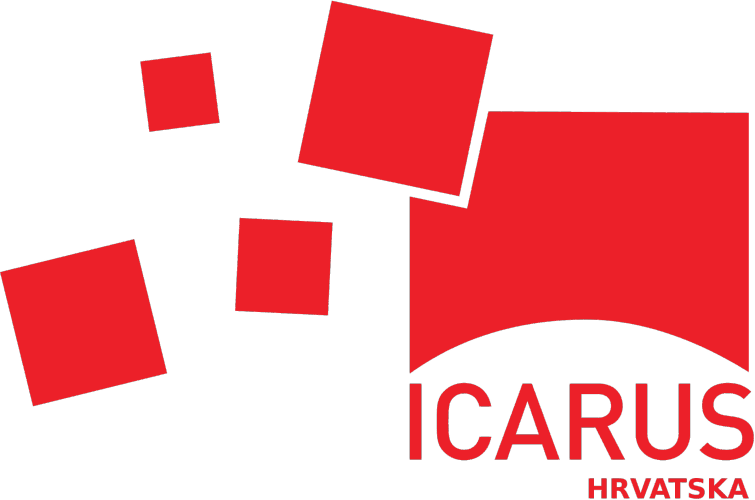
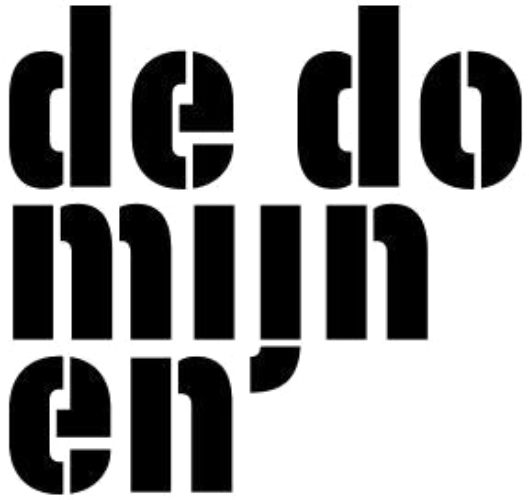



Start over